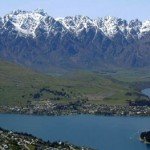GeniusNet is proud to host the ION e-Letter. ION is New Zealand’s original virtual community for innovators, entrepreneurs, mentors and investors. ION is kindly supported by EGL and Revera.


W2W W0W
The magic that is Wellington to the World returns on the 17th of November. Unlimited Potential are once again managing this annual technology showcase aimed at further cultivating the entrepreneurial ecosystem. Included in this year’s stellar speaker line-up are Read Write Web founder Richard MacManus, McDiarmid Young Scientist of the Year John Watt and Ben Young author, entrepreneur and social media guru. The event revolves around pitches from local tech entrepreneurs and presentations from the cutting edge of ICT research.
The central theme for W2W is “going global from New Zealand” so video content from the event is circulated to KEA‘s global network. Entrepreneurs from last year actually received phone calls from investors in the United States after seeing the online video content. Business intelligence software developer Futrix secured direct assistance from W2W co-sponsor UKTI to establish a market presence in Europe, after they presented at last year’s event.
Registrations are essential for this key event that aims to build bridges between technology innovators, entrepreneurs and investors.
http://www.up.org.nz/w2w09/
EDTalks Symposium
If you are planning to head to the capital for W2W, why not stay on for EdTalks the following day? The symposium will attract educators and officialdom from around New Zealand to hear about technology, learning, creativity and innovation. The programme looks great if you are in this field.
http://www.core-ed.net/edtalks-symposium
Icehouse Fast Pitch 2009
Fast Pitch is a real-life Dragon’s Den style business pitch competition for Kiwi entrepreneurs. Last year’s winner of the Best Funding Opportunity for Investors category was Sam Ng from Wellington. His company, Optimal Workshop, develops specialised feedback to enable software developers a way of getting and following-up feedback from end users. The programme offers pitching workshops and personal coaching and is great value at only $85.
Multicore Computing MiniConf
Interested in multicore and parallel computing? Come along to the MiniConf at the Linux conference in January. Multicore and parallel computing is an emerging area that promises to spawn some of the high growth businesses of the future. If you are a technology entrepreneur or investor, computing science researcher or software developer, the miniconf may well be of interest.
 ION Spotlight – Beetil
ION Spotlight – Beetil
Beetil is a web-based service management solution by Wellington developers YouDo. Based around the ITIL framework, Beetil provides a seamless and easy to use framework for I.T. support and compliance. YouDo co-founder Dan Lee says that Beetil simplifies service management for small and medium enterprises who aren’t looking for a highly complex system. Beetil not only handles fault management, but also compliance around software changes. Users can also control customer access permissions through a unique portal set-up.
http://www.beetil.com/
Got an enterprising Kiwi tech story to share? I want your name! ION Spotlight is kindly supported by iWantMyName New Zealand’s most innovative global domain registrar.
ION Homepage Makeover
In case you have been wondering what has happened to our homepage – fear not. During October we plan to spend some time tidying up the site and returning it to its former glory. In the meantime you can still reach the ION forum here.
Got an event or story related to innovation or entrepreneurship in New Zealand? We’d love to place it in our bi-monthly newsletter. Reply to this blog or catch up on Twitter @GeniusNet.




 I can’t tell you how many meetings I’ve attended recently where I was involved in explaining the importance of having an entrepreneurial ecosystem within which to grow high value technology ventures. Unfortunately it can be hard work explaining why social capital is important when people are focused solely on linear metrics.
I can’t tell you how many meetings I’ve attended recently where I was involved in explaining the importance of having an entrepreneurial ecosystem within which to grow high value technology ventures. Unfortunately it can be hard work explaining why social capital is important when people are focused solely on linear metrics. Recently I indulged my eight year son with a short holiday down south, including a day on the slopes at the very scenic Remarkables range. He’s already a very competent skier and full of confidence after only one season. In contrast, I spent most of the day sitting on my backside wondering why snow-boards do not have brakes installed – design flaw no doubt. But my son’s lack of fear provided me with some insight into what a difference attitude makes.
Recently I indulged my eight year son with a short holiday down south, including a day on the slopes at the very scenic Remarkables range. He’s already a very competent skier and full of confidence after only one season. In contrast, I spent most of the day sitting on my backside wondering why snow-boards do not have brakes installed – design flaw no doubt. But my son’s lack of fear provided me with some insight into what a difference attitude makes.